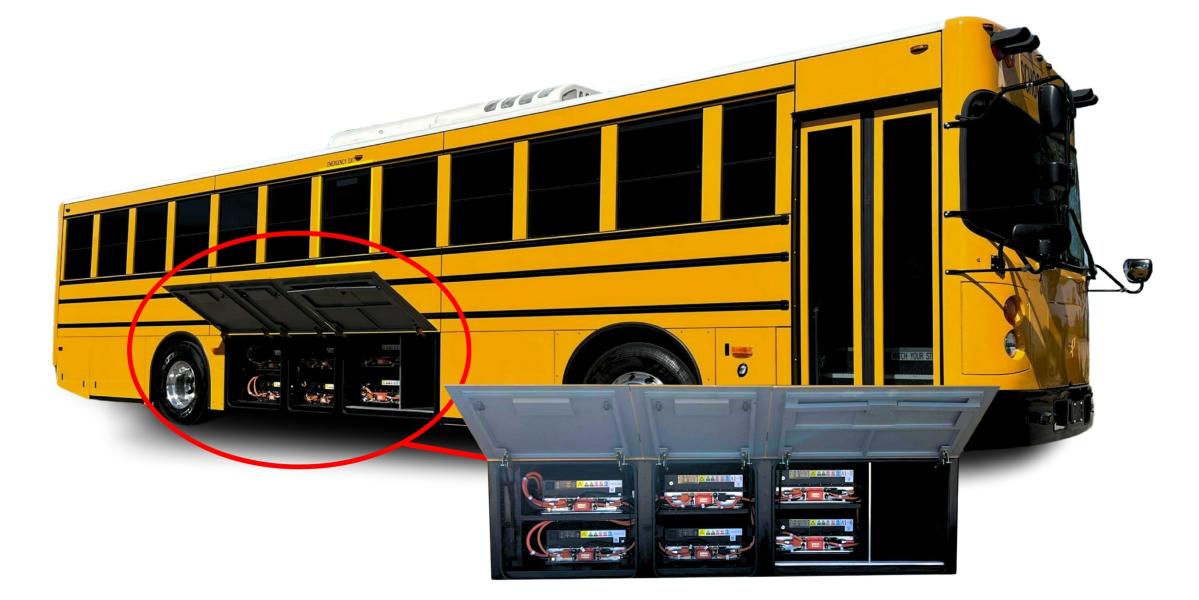Busses in general are the perfect candidates for full EV. They have set routes and spend most of their time parked in a barn waiting to run their routes.
Incidentally it also makes it easier and cheaper to implement public transit beyond school busses for the same reason. Dedicated routes with set distances and they return to a central location for parking and maintenance. Electricity is far cheaper than gas or diesel.
I wonder about winter. It’s often too cold to get the desiel busses started here. The school busses are usually just parked in a field between runs. Will they be sitting there plugged in heating the batteries?
EVs do perform worse in cold, but starting really isn’t as much of an issue as it is with combustion engines.
The main reason why old cars can’t start in the cold is because the 12v battery can get low due to the cold and can’t power the spark plug. Or from some movable part being frozen.
An EV also has a 12v, but it doesn’t require any particular power to start, so it really doesn’t matter if it gets low. It also has fewer moving parts in the engine.
Even in extreme conditions or from having shitty batteries, they can quickly preheat. There’s no reason to keep them warm all day long. There are preheaters for combustion engines too, so unless you’re driving ice road truckers, there’s never a good reason to keep the engine idling on any type of car. Idling is generally bad for engines too.
However, a good reason to preheat an EV while it’s still plugged in is to use the grid for heating and thereby saving the battery range for driving.
Generally, electric vehicles have battery management systems where the battery uses a small amount of its own power to heat and cool itself. Of course that uses some electricity, but not terribly so.
The one major exception to this is the Nissan Leaf. But I don’t think that will be the platform used for these school buses.
For heating, EVs experience pretty severe drain. That includes heating the battery and heating the cabin
Most have heat pumps which are more efficient than electric resistance heating, but it still results in a significant loss of range
For the busses (and car EVs) they just need to factor that in when designing the battery storage and vehicle storage itself
If the bus can sit in a temp-controlled environment or hooked up to even a 120V charger, it can keep warm without sacrificing range
If you’ve got a heat pump, you’re probably looking at several kilowatts to keep a big battery warm. 5 is probably generous. I’d imagine a few hundred kilowatt hours in a battery like that (figure roughly 1 mile per kwh). If a bus is on the road for 10 hours, you’d be looking at a loss of 50 kwh, leaving about another 250 kwh (about 250 miles) for driving. A quick search says a school bus usually drives 65-75 miles daily.
Can they be plugged in to help things? Of course. Is it absolutely necessary to? Probably not. Every little bit helps, but if we’re talking about just 120V you’ll probably only get about a kilowatt, which wouldn’t be huge even with a heat pump in cold weather (unless I’m grossly overestimating how much the heat pump would need, which is possible, but would also leave even more battery capacity by that calculation)
A massive 387 kWh battery supplies nearly 300 miles of range and it can carry up to 90 people — around three classrooms full of kids.
Large electric school buses with around 100 miles of range can cost $300,000 to $400,000, up to four times the price of a diesel-powered school bus. However, maintenance costs are lower and the US Environmental Protection Agency (EPA) recently launched the Clean School Bus Program providing $5 billion over five years to replace existing school buses with zero-emission and low-emission models.




